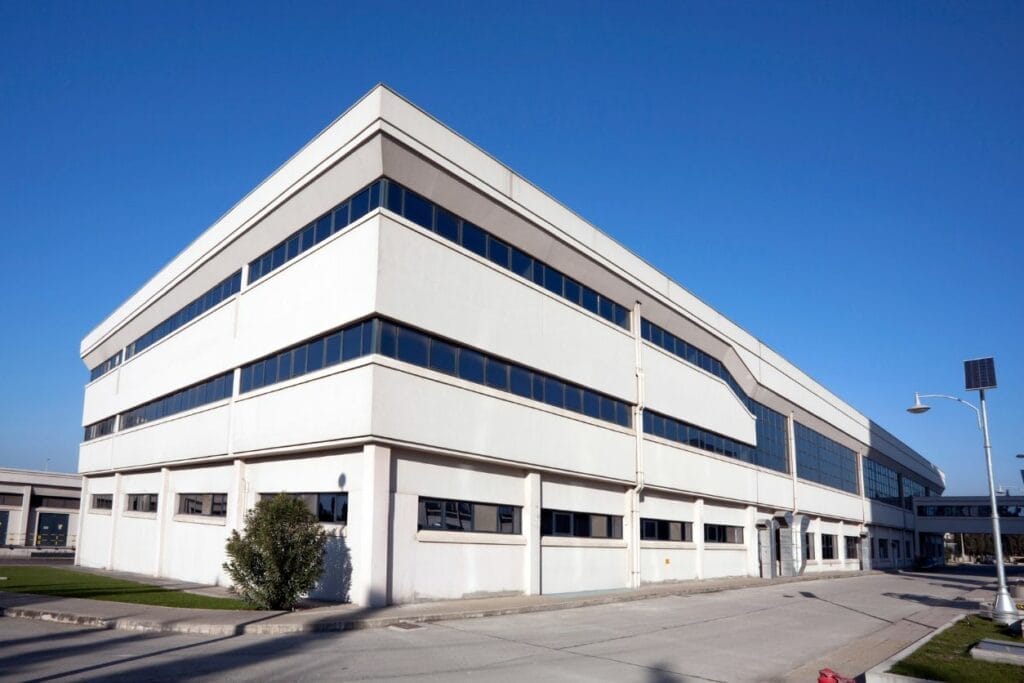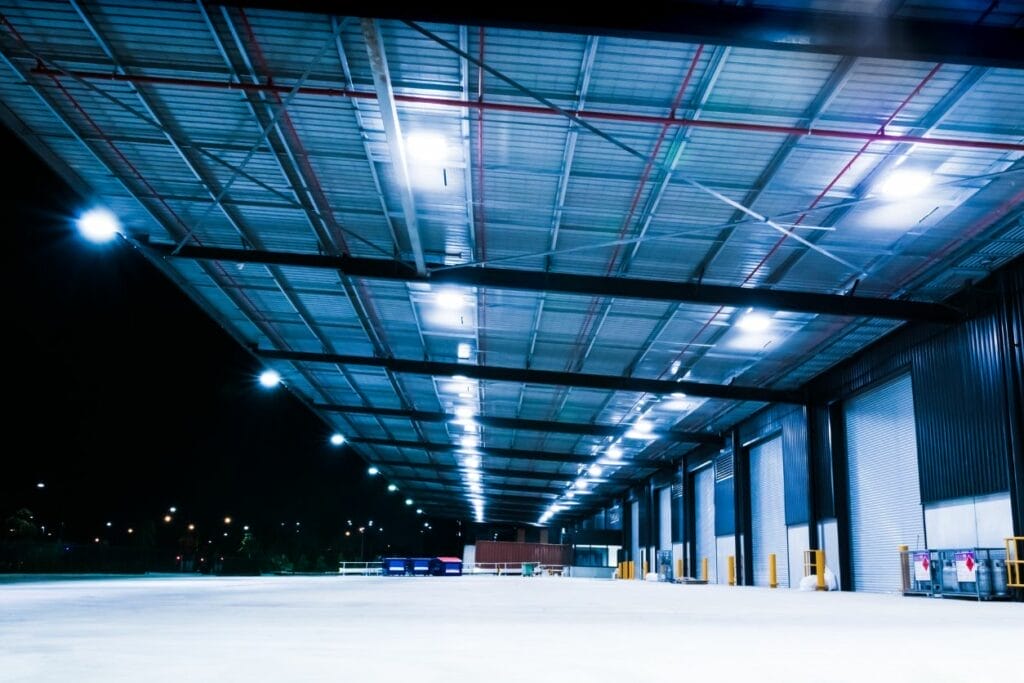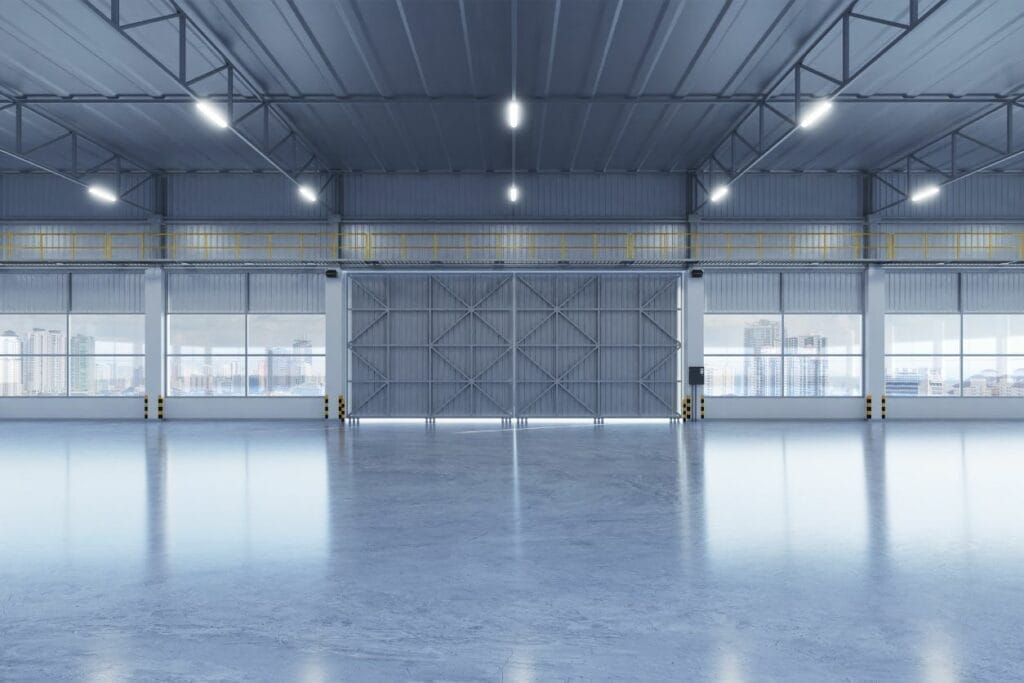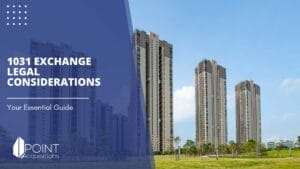
Discover the Versatility of Flex Spaces: Understanding What Is a Flex Space
Flex spaces represent a versatile and adaptable solution in the commercial real estate sector, challenging conventional notions of workspace design. These spaces allow an office, warehouse, and retail store to coexist under a single roof. This is the prospect of flex spaces, a revolutionary approach to workspace design that caters to a wide spectrum of business needs.
As the name suggests, flex spaces offer flexibility, an attribute that is becoming increasingly valuable in our rapidly changing business landscape. From startups to established corporations, businesses across the spectrum recognize the benefits of flex spaces, favoring them over traditional office spaces. But what exactly is a flex space, and how can it help your business? Let’s explore what is a flex space and how it can benefit your business.

Table of Contents
Key Takeaways
- Flex spaces provide a unique blend of warehouse, office, and retail space with unparalleled flexibility.
- The demand for flex spaces is driven by remote work trends, scalability, affordability & convenience of coworking spaces & growth in e-commerce.
- Investing in flex space requires careful consideration due to potential challenges such as zoning restrictions & limited branding opportunities. Online resources/experts help businesses find the right fit.
Defining Flex Space in Commercial Real Estate
In commercial real estate, flex spaces are an innovative option. They are highly versatile commercial real estate options that combine warehouse space, office, and retail space to meet the diverse requirements of various businesses.
Unlike traditional office spaces, flex spaces provide a unique blend of office and industrial space under one roof. This allows businesses to personalize the space to their specific needs. This blend of different types of spaces within one property sets flex space apart from traditional real estate options.
The main draw for businesses to flex spaces is their unparalleled flexibility and versatility. Not limited to a single-purpose workspace, businesses can find flex space that perfectly suits their operational needs. This potentially improves staff retention and encourages a sense of community and teamwork. Flex spaces have become preferred for businesses desiring a more adaptable workspace solution.
Characteristics of Flex Spaces
Flex spaces offer unique characteristics that contribute to their versatility and adaptability. These features include:
- Higher ceiling heights
- Configurable layouts
- Shared amenities
These features make them suitable for various industries. It is, therefore, easier for businesses to find flex space that suits their specific requirements, providing a more personalized solution than traditional office spaces.
Beyond their unique features, flex spaces are intentionally designed for scalability and offer a flexible space for businesses. This is particularly beneficial for startups and companies that foresee changes in their flex space property requirements as their businesses progress. Also, the option to tailor the layout and design of their flex property allows businesses to create a distinct work environment at a reasonable cost.
Flex spaces are also equipped with the following:
- Complimentary Wi-Fi
- Coffee
- Lounges
Flex spaces provide more office space for businesses and guarantee they have everything they need to run their operations smoothly.
Types of Businesses That Benefit From Flex Spaces
The adaptable nature of flex spaces makes them a fit for a broad spectrum of businesses. Some businesses that particularly benefit from flex space versatility are:
- E-commerce fulfillment centers
- Light manufacturing units
- R&D facilities
For example, e-commerce businesses profit from the scalability and flexible lease terms provided by flex spaces, assisting them in retaining their competitive advantage in a quickly progressing industry.
Likewise, research and development facilities can leverage the adaptability of flex spaces to comfortably accommodate shifting demands and size requirements. Several notable companies, including Uber, Instagram, and Microsoft, have successfully used flex spaces. This helps demonstrate their practicality and adaptability across a range of industries.

The Growing Popularity of Flex Spaces
The popularity of flex spaces is swiftly on the rise as businesses recognize their capacity to cater to varied operational needs. This growing popularity can be attributed to several factors, including:
- The trend of businesses transitioning to remote work
- The need for flexibility in terms of location and amenities
- The rising demand
- Recovery of the office market
- Adaptability for startups and newer companies
- Scalability
All of these factors contribute to flex spaces’ increasing popularity in the commercial real estate market.
The popularity of flex spaces is not just anecdotal. The most recent statistics and data show that:
- The number of individuals working in coworking spaces globally is expected to triple between 2021 and 2024, reaching five million.
- This indicates that the demand for flexible office spaces is set to grow significantly in the coming years.
- However, it’s important to note that the pandemic has had a dual effect on the prevalence of flex spaces, both impeding and propelling their growth.
Market Trends Driving Flex Space Demand
Several market trends are fueling the demand for flex spaces. Some of the most significant trends include:
- The increase in remote work and the gig economy. This has resulted in an increased demand for adaptable workspaces catering to diverse work schedules and locations.
- Businesses of all sizes are broadening their use of flex office solutions, resulting in improved occupancy rates.
- The affordability and convenience provided by coworking spaces are also contributing to the growing demand for flex spaces.
Another key trend is the growth of e-commerce. As more businesses transition to online operations, the requirement for flexible and adjustable workspaces is rising. This trend is particularly pronounced for businesses requiring office and warehouse space, such as e-commerce fulfillment centers. With their combination of office and industrial space, flexible spaces are perfectly suited to meet these needs, driving their demand in the commercial real estate market.

Pros and Cons of Investing in Flex Spaces
As with any investment, some pros and cons should be carefully considered. On the one hand, investing in flex space offers many benefits that often surpass those of a traditional office space. Some benefits include:
- Cost savings compared to traditional rental options
- Customizable work environments
- Efficient shared resources
On the other hand, there are also potential challenges and drawbacks associated with flex spaces. These may include:
- Zoning restrictions
- Increased maintenance costs
- Limited branding opportunities.
Hence, when considering investing in flex spaces, it’s important to balance the pros and cons before deciding.
Benefits of Flex Spaces
Investing in flex spaces provides numerous substantial benefits. One such benefit is their affordable cost. Better value allows companies to minimize costs and eliminate unnecessary expenses. Compared to conventional office leases, flexible workspaces are usually more economical, making them an attractive option for businesses.
Another distinguishing advantage of flex spaces is their scalability. They allow businesses to expand or contract their operations based on their needs easily. This flexibility allows businesses to easily adjust their space according to their needs while accommodating future headcounts.
Moreover, the month-to-month or shorter-term leases offered by flex spaces are advantageous for either growing or downsizing businesses.
Potential Challenges and Drawbacks
Although flex spaces present numerous benefits, they are not without their unique set of challenges and shortcomings. One of the key challenges is the zoning restrictions that may apply to flex spaces. Certain types of businesses may not be permitted in flex industrial spaces due to municipal regulations. This can limit the options for potential tenants.
Increased maintenance costs associated with flex spaces also pose a potential drawback. Various factors, such as the variety of users, increased wear and tear, and the implementation of shared amenities, can lead to higher maintenance costs.
Finally, flex spaces can also limit branding opportunities for businesses. Unlike traditional office spaces, where businesses can brand the space to reflect their identity, flex spaces may have restrictions on alterations and branding elements. This can make it difficult for businesses to build a solid and distinct brand presence.

Tips for Finding the Right Flex Space for Your Business
Identifying the appropriate flex space significantly impacts your business. However, with so many options available, finding the flex space that perfectly suits your business needs is challenging. Thankfully, there are resources available to help streamline this process.
Whether using online resources and platforms or collaborating with real estate experts, these tools assist in identifying the ideal flex space for your business.
Online Resources and Platforms
With today’s digital connectivity, the internet provides a wide array of resources to assist you in finding the right flex space for your business. Online platforms, industry associations, and social media groups provide businesses with the necessary information to find flex spaces for sale or lease. Some websites that offer comprehensive listings for flex spaces available for sale or lease include:
- LoopNet
- Crexi
- Property Shark
- Craigslist
These websites can help you find the perfect flex space for your business needs.
Beyond these platforms, industry associations like the Global Workspace Association (GWA) and FlexSpace Advisors provide resources for finding flex spaces.
Social media groups related to commercial real estate or flexible office spaces also offer a networking and information-sharing platform. They allow you to connect with other industry professionals who may have knowledge or leads on available flex spaces.
Working with Real Estate Experts
Collaborating with real estate experts is another effective method for identifying the appropriate flex space for your business. These professionals have extensive knowledge of the local real estate market and are well-acquainted with the available flex spaces in the area. They understand businesses’ individual needs and specifications and can help match them with suitable flex spaces.
Moreover, real estate experts also help with the following:
- Negotiating lease terms on behalf of businesses, making sure they secure the best deal
- Using their familiarity with market dynamics and local regulations to negotiate lease terms and secure a beneficial agreement effectively
- Providing direction and assistance throughout the entire process. From searching for flex spaces to signing the lease agreement and even offering guidance on commercial real estate investing.

Maximizing the Potential of Your Flex Space
After identifying the suitable flex space for your business, the next step is fully utilizing its potential. This involves customizing the layout and design of your flex space to match up with your business operations and adapting it to meet changing business needs.
Customizing Your Flex Space
One of the main advantages of flex spaces is their capacity to be customized. You can personalize the flex space layout to suit your business operations, creating a workspace that perfectly suits your needs. From repurposing existing office furniture to incorporating smart storage solutions and using natural light to your advantage, a range of options are available for customizing your flex space, including optimizing your storage space.
Customization is about more than just aesthetics. By carefully considering the purpose of the space and accounting for storage, you can create a layout that optimizes productivity and efficiency. This involves:
- Dividing the area
- Personalizing the design
- Deviating from the room’s designated purpose if it better serves your business needs
Adapting to Changing Business Needs
As businesses are dynamic entities, the workspace should mirror this. As your business develops, your flex space should adapt accordingly. Adapting to changing business needs is essential for a flex space to remain relevant and useful.
Flex spaces, also known as flexible spaces, are inherently adaptable. They provide a customizable floor plan that can be adjusted to different requirements. They can support various working styles, such as hybrid work, and can be modified to accommodate changes in headcount, desks, rooms, and open areas.
This adaptability allows businesses to optimize the utilization of the space and establish diverse work settings to support different activities and collaboration.

Case Studies: Successful Businesses Using Flex Spaces
To show the versatility and adaptability of flex spaces, we will review a few instances of successful businesses that have used these commercial real estate options. These case studies provide valuable insights into the practical applications of flex spaces and demonstrate how they can improve business operations.
Notable companies that have successfully used flex spaces include:
- Dell
- Uber
- Colliers
- Microsoft
- EY
- Amazon
- J.P. Morgan
- Unilever
- Salesforce
These companies have leveraged the benefits of flex spaces to support their growth strategies and adapt to changing market conditions. By providing scalable spaces and flexible leases, flex spaces have allowed these businesses to expand less riskily, demonstrating their practicality and adaptability across various industries.
Summary Of What Is A Flex Space
To sum up, flex spaces are versatile and adaptable commercial real estate options that provide businesses with the flexibility to meet their unique needs. They combine office, warehouse, and retail spaces under one roof, offering a unique blend of spaces that can be personalized to specific operational requirements. These spaces are particularly beneficial for e-commerce fulfillment centers, light manufacturing units, and R&D facilities, among other businesses.
However, like any investment, it’s important to consider the potential challenges, too. These may include zoning restrictions, increased maintenance costs, and limited branding opportunities.
Despite these potential challenges, the growing popularity of flex spaces, driven by trends such as remote work, co-working, and the growth of e-commerce, suggests that they are a viable and advantageous option for many businesses. So, if you’re looking for a flexible, adaptable workspace solution that can grow with your business, a flex space could be just what you need.
If you are looking to sell your flex space contact Point Acquisition for a non-obligation offer!

Frequently Asked Questions
What is the meaning of flex space?
Flex Space is a form of commercial real estate that combines warehouse, office, and retail space. It is often a large warehouse-style building with custom office space and shorter leases than a traditional office.
What does Flex mean in real estate?
Flex in real estate refers to flexible property, a hybrid of office and industrial space. It can stand alone or be part of a single-story industrial park, making it an important term for commercial real estate investors to know.
What is another name for a flex space?
Flex space is another name for a family room, bonus room, loft, study, or even an F.R.O.G., allowing homeowners to customize their living space according to their needs.
What are the benefits of flex spaces?
Flex spaces provide significant advantages, such as cost savings, scalability, and increased networking possibilities, allowing organizations to maximize their resources.
What potential challenges are associated with investing in flex spaces?
Investing in flex spaces has potential challenges, including zoning restrictions, increased maintenance costs, and limited branding opportunities.
About The Author

Jesse Shemesh
Disclaimer
Please note that Point Acquisitions is not a tax expert or tax advisor. The information on our blogs and pages is for general informational purposes only and should not be relied upon as legal, tax, or accounting advice. Any information provided does not constitute professional advice or create an attorney-client or any other professional relationship. We recommend that you consult with your tax advisor or seek professional advice before making any decisions based on the information provided on our blogs and pages. Point Acquisitions is not responsible for any actions taken based on the information provided on our blogs and pages.
1031 Exchange Capital Gains Tax Deferral
According to a 2021 report by the National Real Estate Exchange Services (RES), over 240,000 1031 exchange transactions were completed in the United States, totaling $100 billion. This impressive figure underscores the role of 1031 exchanges in the real estate…
Read More1031 Exchange Benefits
As of Q4 2023, the national vacancy rate for all commercial property types in the United States sat at 9.2%, according to CBRE’s latest insights and research. This represents a slight decrease compared to the previous quarter and suggests a…
Read More1031 Exchange Legal Considerations: A Must-Read Guide
You’re in the right place if you’re considering a 1031 exchange for your commercial real estate investments. Whether you’re a seasoned investor or just dipping your toes into the market, understanding the legal landscape of 1031 exchanges is key to…
Read More

